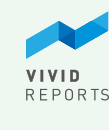In today’s data-driven business landscape, financial reporting software plays a crucial role in helping organizations streamline their financial processes, improve accuracy, and make informed decisions. However, with numerous options available in the market, choosing the right financial reporting software can be a daunting task. This comprehensive guide aims to provide you with valuable insights and considerations to make an informed decision that aligns with your business needs.
- Identify Your Requirements: Start by identifying your specific requirements and goals. Consider factors such as the size of your organization, the complexity of your financial data, the number of users, and the level of integration needed with existing systems. Understanding your needs will help narrow down the options and avoid investing in unnecessary features.
- Scalability and Flexibility: Choose a financial reporting software that can scale with your business. Ensure it has the capacity to handle a growing volume of data and adapt to changing business requirements. Look for flexible reporting tools that allow customization, so you can tailor the software to your unique reporting needs.
- Integration Capabilities: Evaluate the software’s integration capabilities with your existing financial systems such as ERPs, CRMs, or HR systems. Seamless integration will enable smooth data transfer and eliminate manual data entry, saving time and reducing the risk of errors. Ensure that the software supports the file formats and data sources you typically work with.
- Data Accuracy and Security: Data accuracy and security are paramount when it comes to financial reporting. Choose a software solution that employs robust data validation and reconciliation mechanisms to ensure the integrity of your financial data. Additionally, prioritize software that offers role-based access controls, encryption, and regular data backups to protect sensitive financial information.
- Reporting and Analysis Features: Consider the reporting and analysis features offered by the software. Look for features such as interactive dashboards, drill-down capabilities, ad-hoc reporting, and the ability to create custom financial reports. The software should provide a user-friendly interface that empowers both finance professionals and non-technical users to generate meaningful insights from the data.
- Support and Training: Ensure that the software vendor provides adequate customer support and training resources. Look for vendors that offer comprehensive documentation, video tutorials, and responsive customer service channels. A software solution is only as good as the support behind it, so prioritize vendors that are known for their excellent customer service.
- Total Cost of Ownership: Consider the total cost of ownership, including upfront costs, licensing fees, maintenance charges, and any additional costs for customization or integrations. Evaluate the pricing structure and determine if it aligns with your budget and expected return on investment. Additionally, assess the software’s upgrade and maintenance requirements to ensure long-term sustainability.
- User Feedback and Reviews: Research and read user reviews and testimonials to gain insights into the software’s performance, user-friendliness, and customer satisfaction. Online forums and software review websites can provide valuable information from real users who have hands-on experience with the product.
Choosing the right financial reporting software is a critical decision that can significantly impact your organization’s financial operations and decision-making processes. By considering factors such as your requirements, scalability, integration capabilities, data accuracy, reporting features, support, cost, and user feedback, you can make an informed choice that aligns with your business goals. Invest the time and effort to find the perfect financial reporting software, and reap the benefits of streamlined financial processes and enhanced decision-making capabilities.






